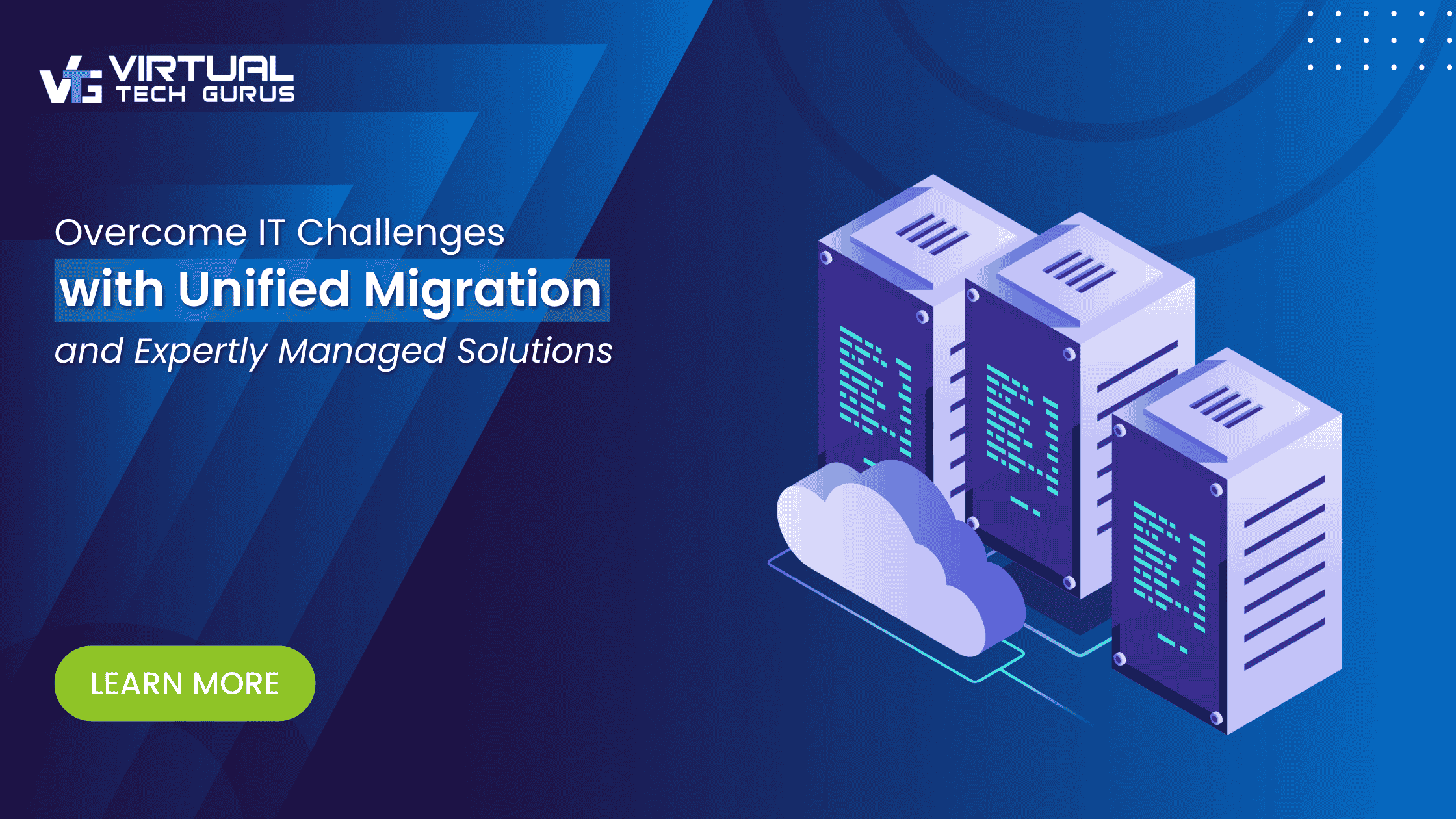Cloud transformation sends work to the cloud, including data, applications, and software programs. Additionally, IT infrastructure could be migrated to the cloud to achieve digital transformation goals. Cloud transformation helps businesses respond quickly to potential hazards and adopt new working methods, including the digital adoption of emerging technologies.
Businesses make investments in digital transformation as a part of their strategy to meet customer expectations and adapt to changing market conditions. Businesses are investing in the cloud because they believe it will enable them to provide outstanding customer experiences, accelerate their growth, and revolutionize their businesses.
Cloud transformation involves
- Migrating apps and software programs
- Moving company data to the cloud
- Transforming your IT infrastructure
Let’s get started with the basics first.
Describe cloud transformation.
The cloud transformation process includes the complete process of transferring business data, applications, infrastructure, and other related hardware and software to the cloud. When an organization embarks on a cloud transformation journey, the context, iterations, and creation of a cloud engine will change over time.
Cloud transformation offers many benefits, including more efficient data sharing and storage, accelerated time to market (TTM), and greater organizational scalability and flexibility. Additionally, network security can be integrated with the help of cloud transformation.
A cloud transformation strategy is what?
A cloud transformation strategy is a framework that covers the entire cycle of digital innovation. It should prioritize migration, data and analytics, management and optimization, and cloud security to obtain a flexible, competitive edge. Cloud transformation is an essential part of the digital transformation framework that has helped to reshape the online space.
Cloud transformation methods, which are encouraged by digital-first initiatives, employ benchmarking methodologies to compare performance to that of competitors and pinpoint problems about a maturity curve.
How Important Is Cloud Transformation?
Cloud computing strategies are critical to adapting to today’s fast-paced, more digital economy. Those not taking advantage of the cloud’s capabilities will fall behind more agile competitors. Using digital technology services such as cloud transformation, you can create new business efficiencies, innovate faster, and build new tech-powered services for your customers.
Faster and Better Prototyping
True digital transformation might require ongoing process changes inside a company. The cloud provides more flexibility because it gives end users access to a unique platform that enables them to build, test, and deploy their applications on numerous channels and mediums more quickly during the transformational phase. In addition, because cloud computing services instantly offer all required computer resources, infrastructure, and platforms, businesses no longer need to invest in a wide range of IT resources.
IT cost reductions
Cloud transformation can help you realize significant IT cost savings. This is primarily because of the scalability provided by the cloud environment, which enables businesses to scale up or down without difficulty and use pay-as-you-go subscription models. The cloud infrastructure essentially eliminates capital investment. To reap the benefits of cloud migration and digital transformation, businesses must still devise smart approaches to control cloud expenditures.
Enhance Time to Market
Cloud-native strategies and other future-proof technologies may significantly increase business agility for organizations, boosting overall operational effectiveness, innovation, and cost-cutting. A cloud server may be set up in minutes compared to a physical server, which could take days or weeks. The cloud speeds up the development of new businesses and allows them to access the market more quickly, according to several research studies and polls.
Benefits of cloud computing for your business
The primary goal of cloud migration is to prevent your company from becoming outdated. The only way for your company to be competitive is to adapt to the fact that technology constantly changes how businesses operate. But cloud transformation doesn’t just protect your organization against market threats. It also provides several benefits that will help your long-term business strategy and improve your day-to-day operations. Some of those benefits include:
- Optimizing data security
When switching to the cloud, data security is a common concern. Cloud storage is secured by encryption and similar security measures that make unauthorized access challenging. Additionally, you benefit from automatic cloud backups, which guarantee the safety of your data.
- Saving Money
The cloud is more affordable than setting up and maintaining local infrastructure since it offers pay-as-you-go packages and a done-for-you model.
- Improved Operational Efficiency
The ability to access crucial information at any time and from any location is becoming standard in a society that is becoming more and more virtual. Cloud-based systems improve data access, allowing real-time collaboration and communication and enhancing analytics by eliminating data silos. Furthermore, the cloud frees IT staff to concentrate on innovations that advance the business rather than regular infrastructure maintenance.
- Lowers overhead
Moving to the cloud may provide your brand with up to 3.2 times the ROI and is a guaranteed approach to saving operational costs. Your data and procedures are now accessible and controlled online once you’ve switched to the cloud. In addition, using a public cloud platform (like AWS, Microsoft Azure, or Google Cloud Platform) will allow you to hire fewer additional IT personnel, saving expenses and increasing efficiency.
- Increased Security
Many business owners are unaware of the importance of their data, apps, and programs. Keeping cybersecurity in-house means that IT personnel must split their focus between safeguarding the system and maintaining regular operations, which is a full-time responsibility. By moving to the cloud, you can outsource security to a service that will monitor risks around the clock, protecting your company against data breaches and other dangers.
Cloud transformation best practices
Committing to cloud transformation may appear daunting initially, but major pitfalls and problems may be avoided with good preparation and planning. Some of the best practices for ensuring a successful transformation are as follows:
- Prepare for continuous compliance.
Obtaining compliance is not a one-time event. Too many businesses make the mistake of upgrading their security systems in the aftermath of a hacking incident, only to back down and fall back into complacency months later. Instead of a reactive approach in which you respond to threats, consider the continuous compliance approach. Your organization’s security posture is regularly reviewed under this plan to ensure it meets industry standards and regulatory requirements.
- Sync IT with business objectives and strategies
Aligning business processes with IT is critical for every modern business, especially as most firms move to new business models that stress the digitization of business processes and extensive cloud deployments. Begin by identifying your organization’s goals and the systems, technology, and procedures in place. Then, create priorities by brainstorming and documenting objectives with representatives from concerned departments. After you’ve set your goals, you’ll need to create a cloud migration plan to guide your execution.
- Obtain leadership support.
If you’re in charge of designing and implementing your company’s cloud transformation strategy, you’ll be in charge of gaining leadership support. So your priority should be to ensure those executives understand the significance of cloud transformation: explain why your business has to migrate to the cloud, discuss the strategic advantages of cloud migration, and be honest about the costs and expected challenges.
- Execute a Measuring Practice
You must evaluate your business against its competitors to better understand where your firm is in terms of skills and gaps. This exercise will assist you in determining where to focus your time, effort, and resources to achieve the best outcomes.
- Think about Cloud Security.
Last but not least, a cloud transformation’s success depends on cloud security. As a result, cloud security should be considered part of your entire strategy and plan. Understanding the security vulnerabilities in your company and the desired future state usually starts with doing an impact study.
Conclusion
Businesses may use cloud transformation to future-proof internal operations while improving efficiency, scalability, and profitability. It is a critical component of digital transformation and works with plans to modernize company procedures. The cloud is the beginning point for a new, flexible corporate world with ongoing mobility and security. It offers a planned transition into the future, ensuring long-term security and more excellent company continuity.
VTG is one such cloud transformation service provider that overcomes all obstacles, delivers quality and speed, and lowers the total cost of ownership. Consult with our cloud transformation professionals to get actionable recommendations for your cloud transformation initiatives.





